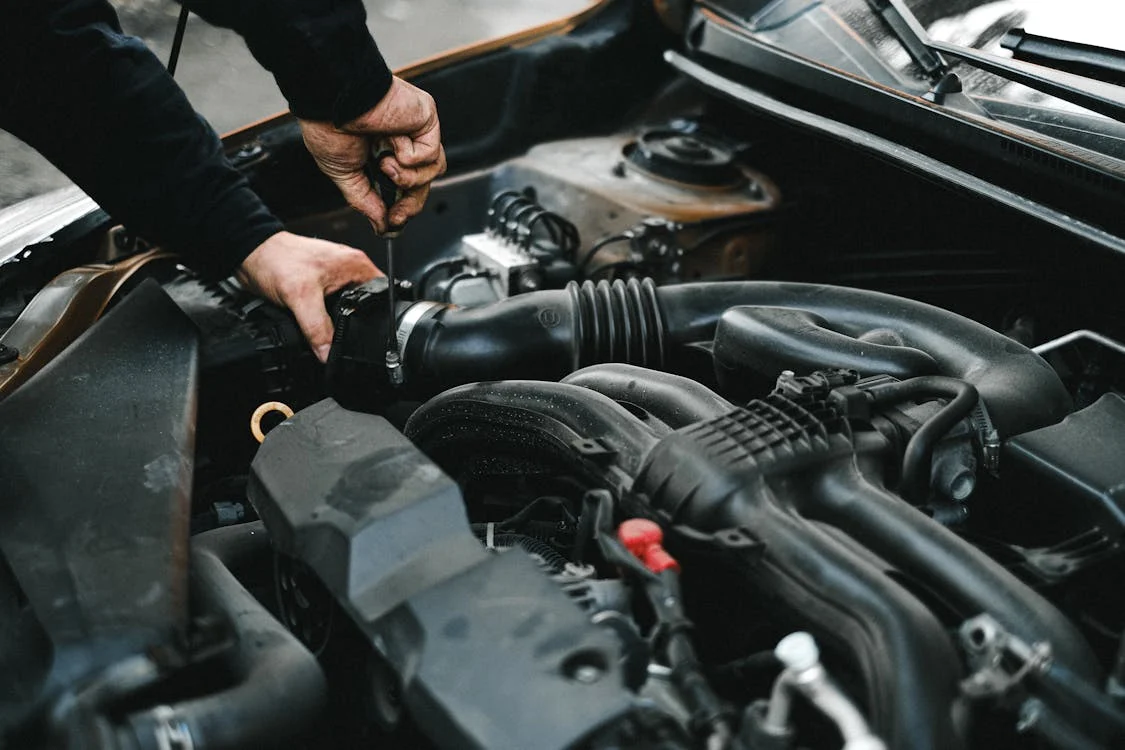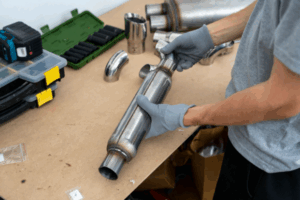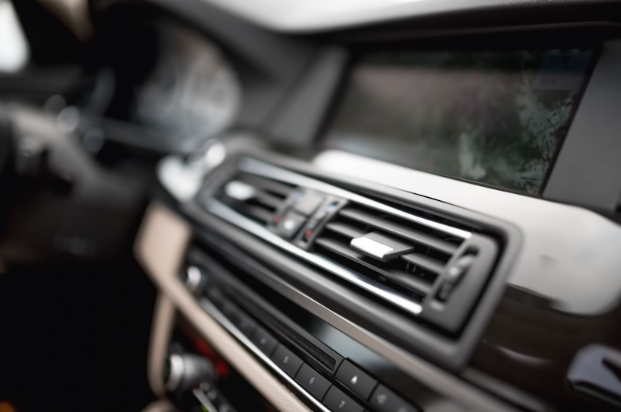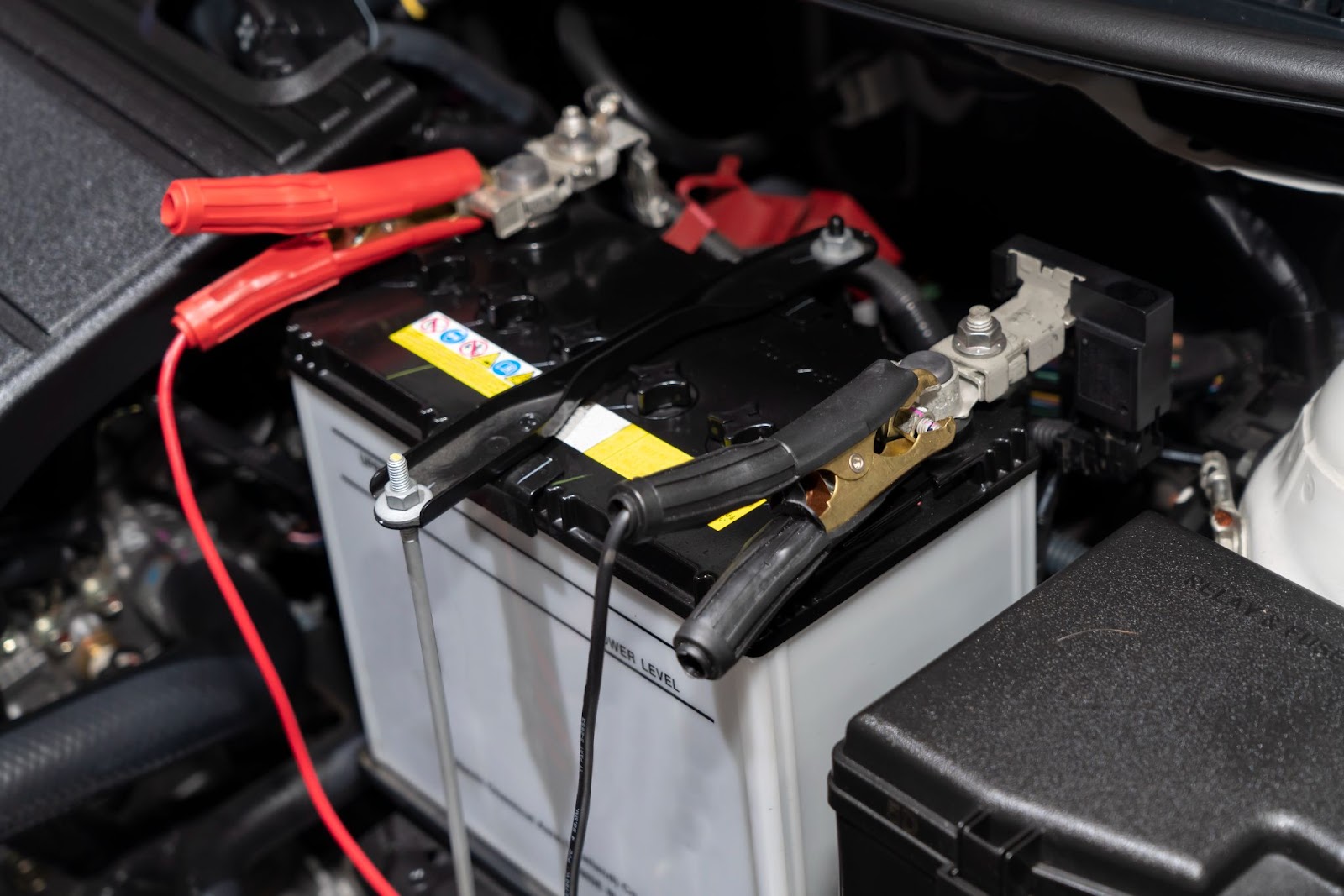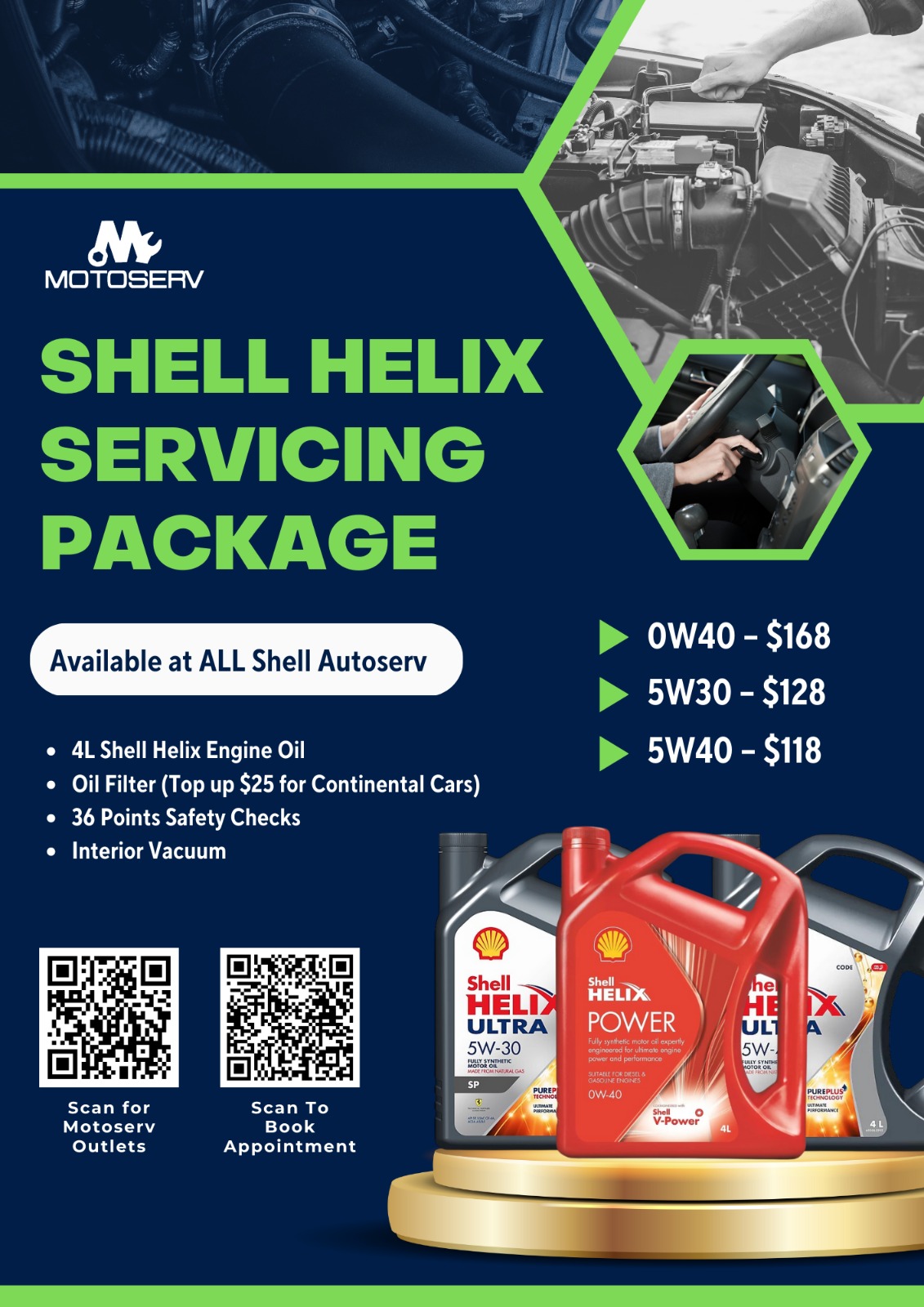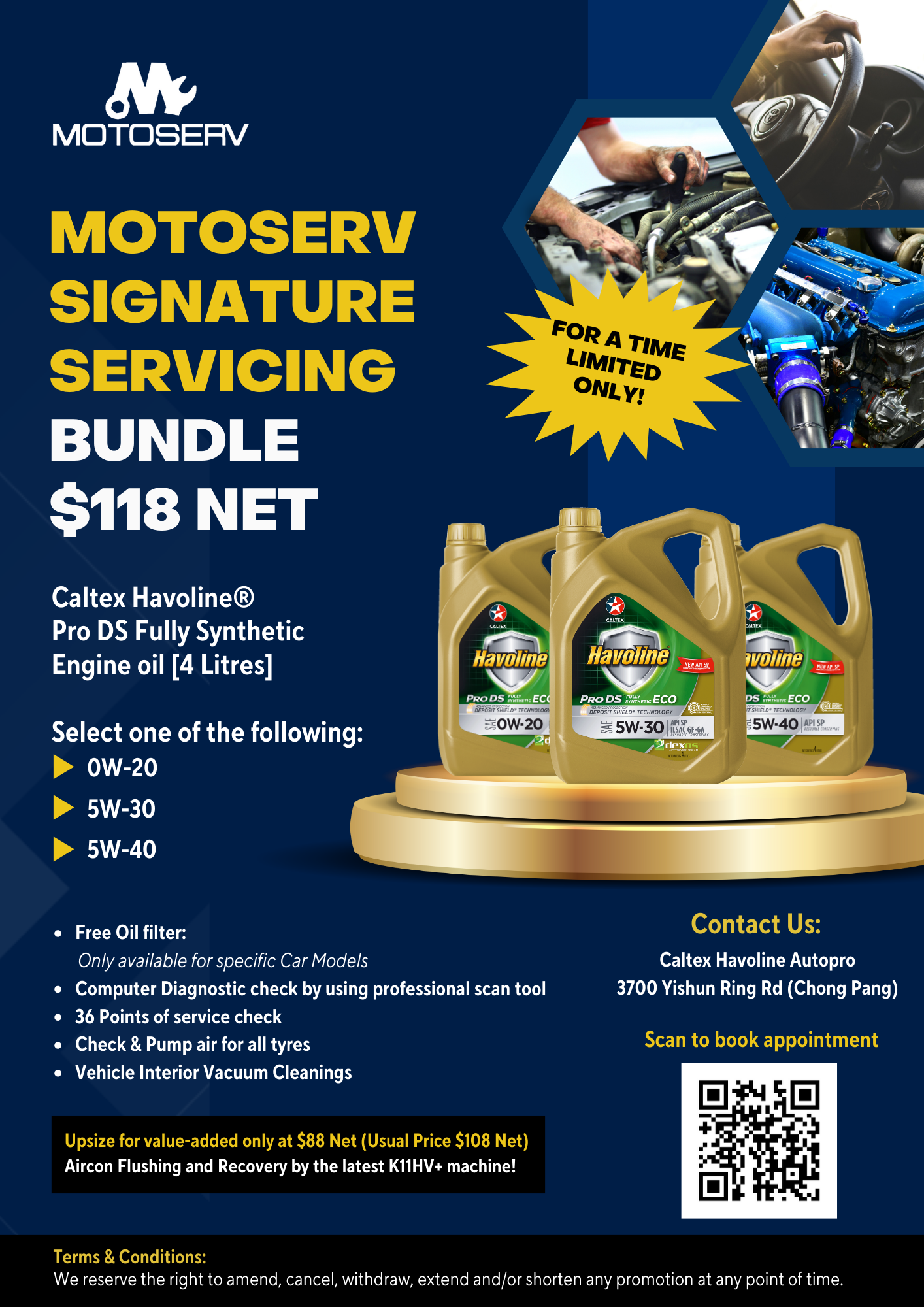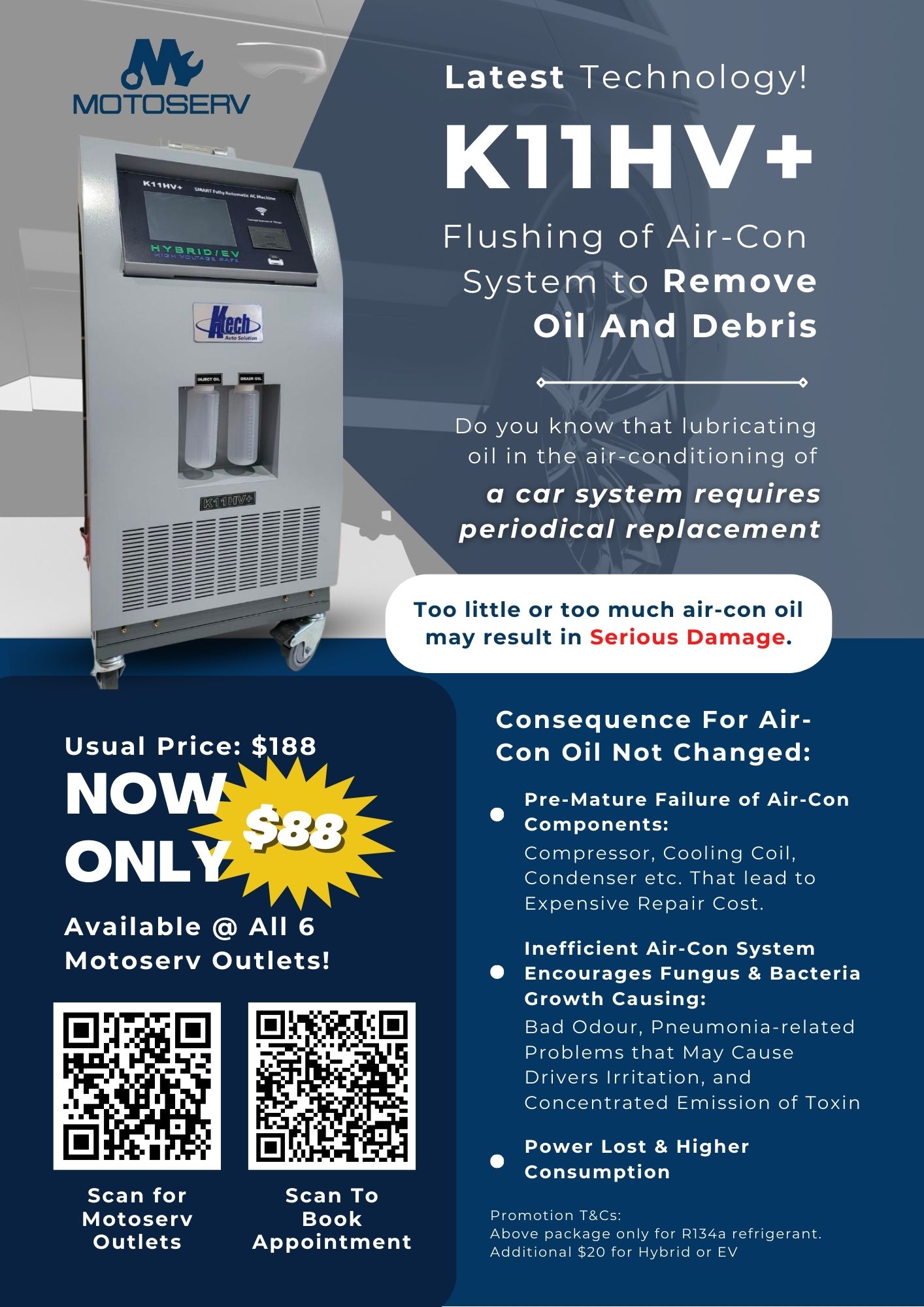Owning a vehicle comes with the responsibility of doing maintenance. Regular maintenance is a must especially in a hot and humid country like Singapore.
Sure, it costs money, but it could prevent expensive parts from breaking in the first place.
Why Conducting Regular Maintenance is Important
Car ownership isn’t just about driving and filling up the gas tank, it involves taking proper care of your vehicle.
Maintenance may feel like a chore and the expense can add up, but it helps keep you safe while also ensuring the car runs smoothly. Additionally, here’s more reasons why it’s important:
Extends Your Vehicle’s Lifespan
Routine servicing can help prolong your vehicle’s components by allowing the parts to work at an optimal environment while also making it efficient.
Prevents Costly Repairs
Regular maintenance will help catch small issues early, preventing them from turning into bigger problems. Bigger problems also lead to costly repairs, which could have been avoided in the first place.
Improves Safety
Neglecting maintenance can lead to faulty braking or worn out tyres, increasing the risk of accidents.
Maintains Resale Value
Having a well-documented maintenance history could maintain or even boost your car’s value as it signals to potential buyers that the vehicle was well cared for.
Enhances Fuel Efficiency
A well-maintained vehicle contributes to better fuel efficiency. Skipping routine maintenance can lead to your car working harder than it should. This also burns more fuel, increasing your expenses at the pump.
Reduces Unexpected Breakdowns
Nothing’s worse than your car breaking down in the middle of your journey. Regular car servicing reduces these failures, keeping your car reliable and road-ready.
Types of Check-ups
When it comes to servicing your car, you usually take it to your local mechanic. But, there are also some tasks you can do yourself.
Both approaches have their own merits. Professional servicing is ideal for complex issues that require expertise and equipment, while DIY maintenance can save time and money for simpler tasks.
The right choice often depends on your budget, schedule, and the complexity of the work.
DIYs
DIY maintenance is usually done once a month or before a long trip. They’re relatively simple and can be completed with just basic knowledge or by following your vehicle’s user manual. Here are some examples of what you can do yourself:
Oils and Fluids
One of the main components that prevents your from breaking and overheating, it’s important to inspect the fluids under the hood regularly to ensure they’re not running below level.
Be sure to check them in the early morning or at least an hour or two after the engine car has cooled down to prevent any pressure related burst from occurring.
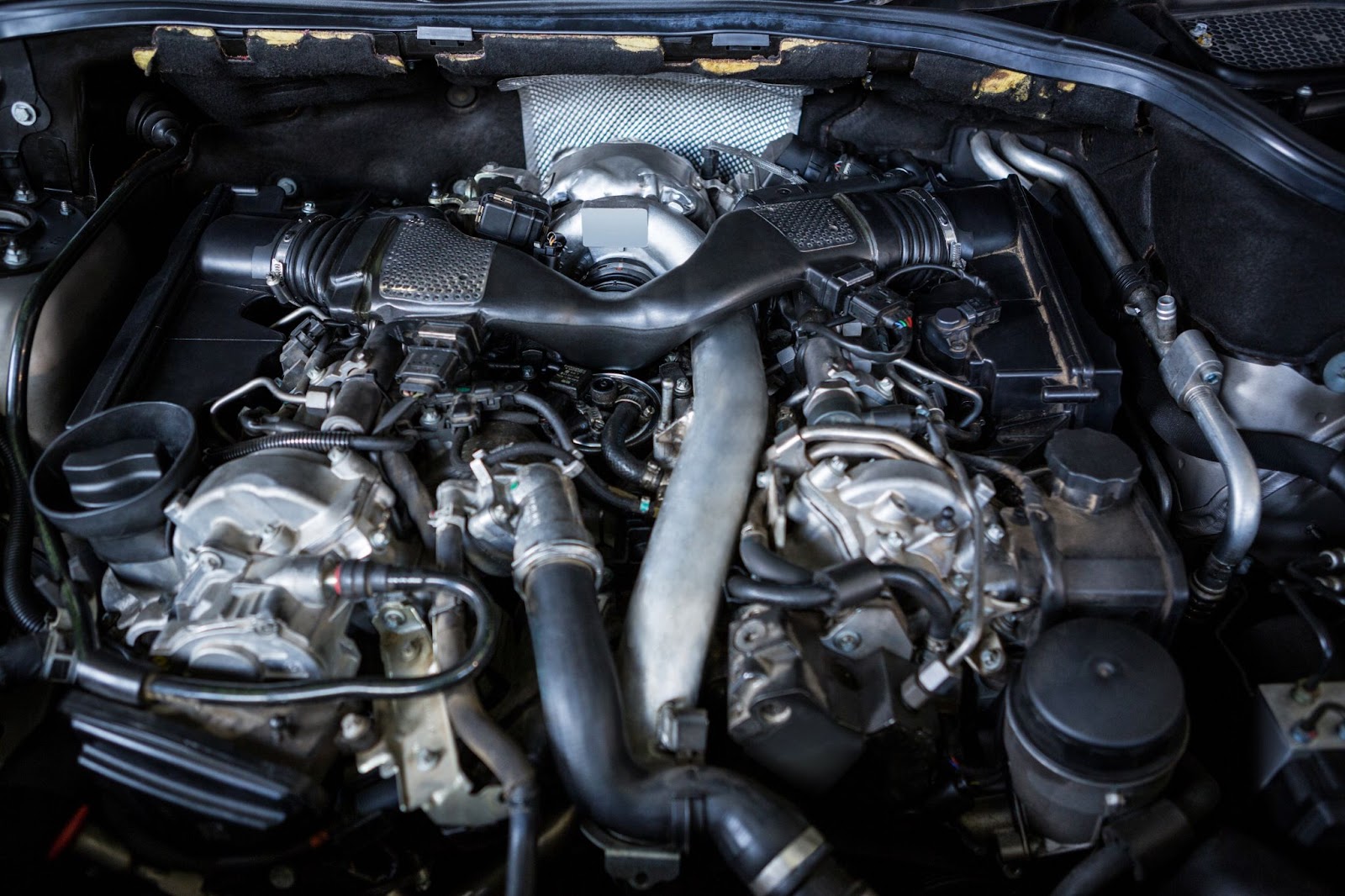
Tyre Pressure
When checking tyre pressure, keep in mind that each car has its own specifications for pressure and maximum load. These details are usually found on a label near the driver’s seat or printed on the sidewall of the tyre.
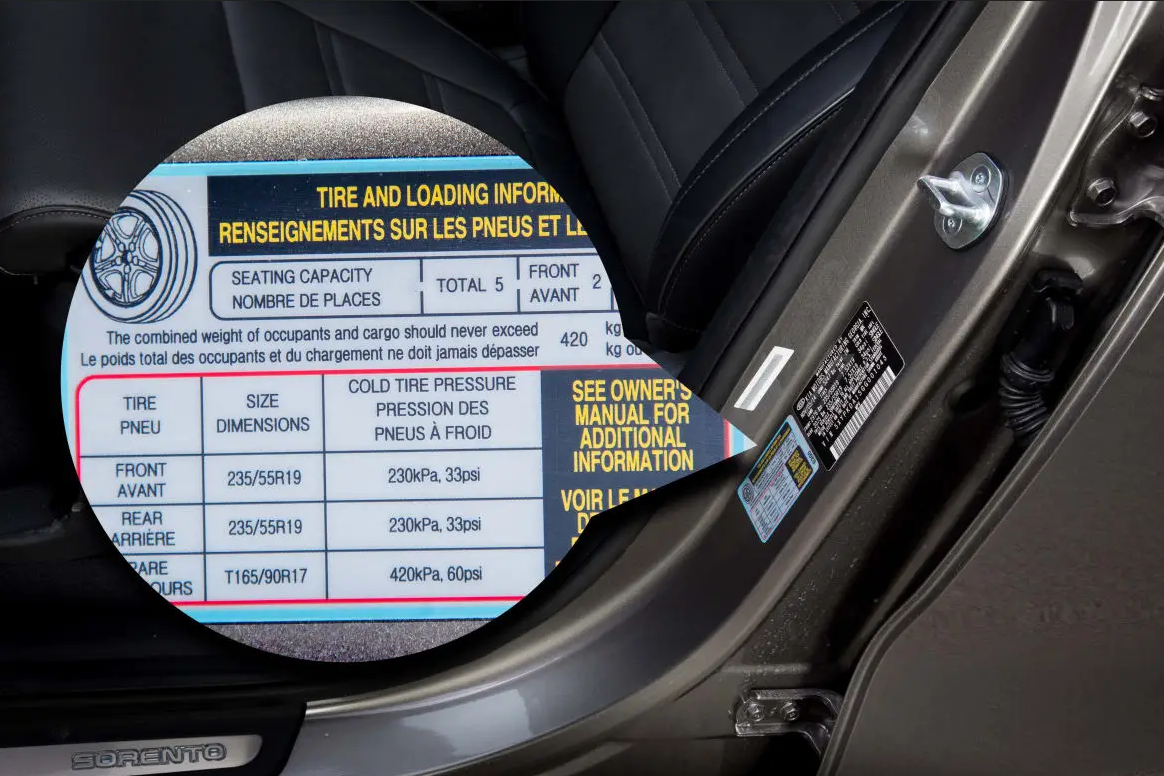
(location of factor recommended tyre pressure)
(source: Cars.com)
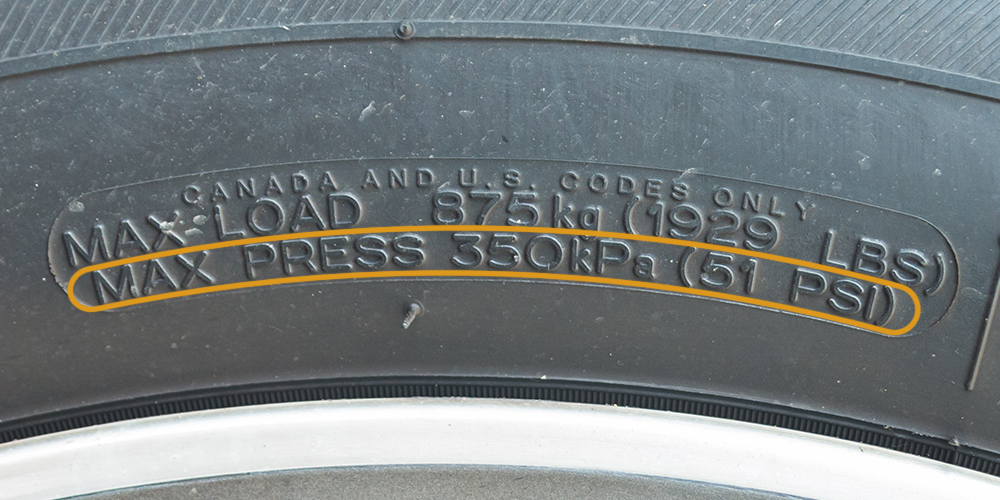
(location of max tyre pressure)
(source: prioritytire.com)
Tyre Rotation
Tyre tread wear varies depending on the type of car you drive. In front-wheel drive (FWD) vehicles, the front tyres tend to wear out faster compared to all-wheel drive (AWD) or rear-wheel drive (RWD) vehicles, since the front tyres handle both steering and propulsion.
On average, tyre rotation should be done every 10,000 km.
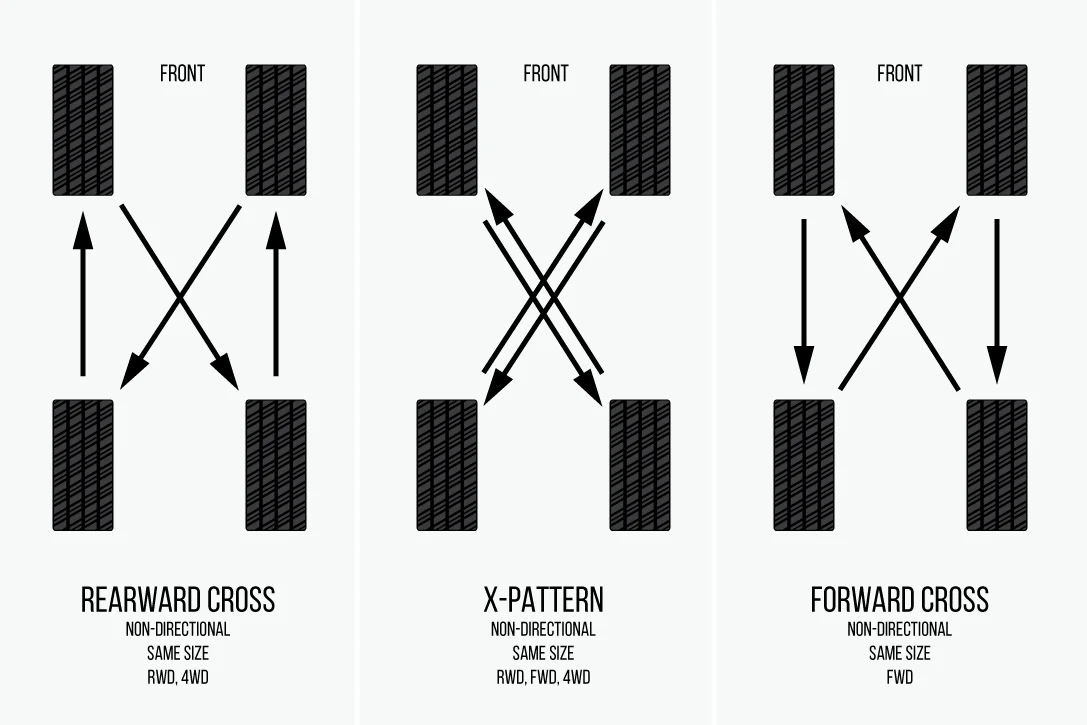
(tyre rotation based on drive types)
(source: solderstick.au)
Front & Rear Lights
Arguably one of the easiest things to overlook, but still important, is checking whether all the lights on your vehicle are working. Headlights are simple to inspect, but you may need someone to help check the rear lights.
Alternatively, you can record a video of the rear while testing the lights to see if they’re functioning properly.
Professional Services
When performing a service check, there may be tasks that are harder to do, too time-consuming, or require specialised tools you don’t have.
That’s when it’s best to bring your car to a professional mechanic for a proper inspection. Below are some of the services professionals can help with:
Belt Drive
Belt drives refer to components within the engine that use a belt or chain to transfer motion to other parts. These include the alternator, power steering pump, water pump and more.
As your car gets older, these parts wear down, so it’s best to check them regularly to prevent them from snapping and causing further damage.
Brake System
There’s a fine line between your car, the road and other vehicles. Accidents can happen at any given moment and your brakes are the first line of defence. Over time, brake pads thin out, rotors can warp and brake fluid may degrade.
Regular car servicing by a professional ensures your brakes remain responsive and safe.
Air Conditioning System
Your air conditioning can be a life saver in some situations. The heat can be unbearable, especially during long drives or when your car has been parked under the sun.
If the system isn’t cooling effectively, the issue may be too complex for you to handle on your own. A professional has the specialised tools and knowledge to service your aircon accordingly.
They’ll be able to recharge the refrigerant safely, and ensure the system is free of leaks
Hoses and Wirings
Hoses in the engine bay carry essential fluids to components like the radiator, fuel system, and brakes. They play a vital role in delivering fuel to the engine and circulating coolant to prevent overheating.
That’s why regular inspection is crucial to ensure proper functioning and to extend the lifespan of these components, especially if your car is often parked under the sun, as prolonged heat exposure can cause hoses to crack.
Wiring components, such as wires, cables, and connectors, deliver power to key systems like the ECU, battery, and other electrical parts. Poor maintenance can lead to power loss or even prevent the engine from starting.
Suspension Components
Your suspension components, like shock absorbers and struts, are essential for controlling the impact your car experiences when driving over bumps and potholes.
That’s why it’s best to inspect it regularly.If you notice your car feels stiffer or less comfortable when going through rough terrains, that may need attention.
Generally, it’s recommended to have suspension components checked every 30,000 to 50,000km.
Transmission Oil
Just like other fluids in your vehicle, transmission oil is used to lubricate the components inside the transmission system.
While automatic and manual transmissions may use different types of oil, the purpose remains the same: to reduce friction and keep the system running smoothly.
It’s important for owners to check the transmission oil regularly, as transmission repairs or replacements can be very expensive.
Generally, it’s recommended to change the transmission oil every 50,000 to 100,000 km, but you should always refer to your owner’s manual for specific guidance.
Conclusion
Whether you’re doing DIY maintenance or seeking professional help, it’s important to ensure your vehicle is running at its best to avoid costly and potentially disastrous repairs. Be sure to perform regular check-ups to catch small issues before they turn into major problems.

Get your car serviced with us!
From hybrid car repairs and battery replacements to aircon servicing, ADAS calibration, and full car maintenance packages, we’ve got everything your car needs.
We have outlet service all across Singapore. Contact us today to book your service.

